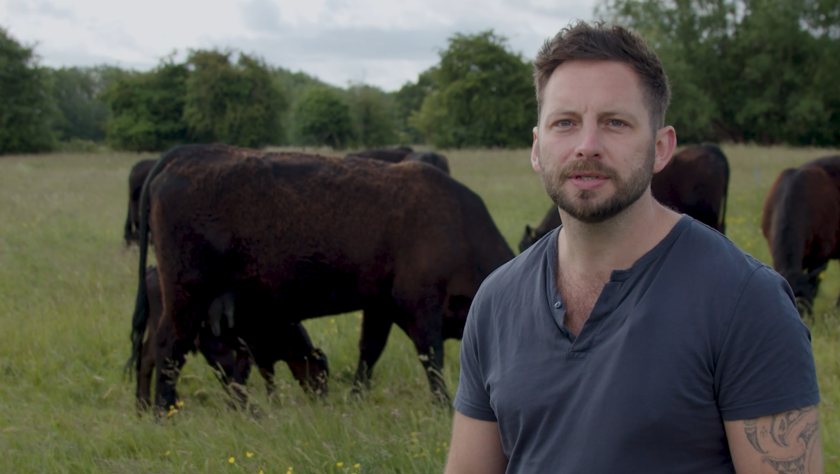
The use of adaptive multi-paddock grazing has seen an Oxfordshire farm maintain cattle growth rates without the need for supplementary feeding this summer.
Adaptive multi-paddock (AMP) grazing, which is being trialled by FAI as part of a four-year project with McDonald’s UK, has been 'invaluable' during one of the hottest and driest summers on record.
This is according to FAI Farms farm manager, Silas Hedley-Lawrence, who believes farmers interested in becoming more resilient to future weather extremes should consider it.
AMP grazing involves ensuring there is no bare soil, leaving grass to grow longer, and grazing a high density of livestock in a defined area for a short period of time, followed by long rest periods.
“Some livestock farmers will graze grass right down to the ground before moving cattle on," Mr Hedley-Lawrence explains.
"For those that did that in May and early June of this year, everything would have been grazed away and this was then followed by a period of no rain and subsequently, little to no grass growth."
In comparison, the AMP grazing system aims to graze no more than 25% of what’s on offer during the spring, 50% in the summer and 75% in the winter, before moving cattle on, he explains.
Mr Hedley-Lawrence adds: “This means that during the spring the pasture barely notices it’s been grazed and the annual grass growth curve is not negatively impacted right from the start of the growing season.
“For example, we had very little rain between June and September. But, because we leave a lot of grass behind, what’s left has carried on photosynthesising.
"The roots have also managed to access retained moisture in the top layers of the soil due to the insulating and cooling effect of the longer residual.”
As well as stimulating grass growth, this system of grazing enables farmers to trap more moisture when it does rain, explains Mr Hedley-Lawrence.
“In more standard grazing management systems, where pastures were left looking more like a golf course during the summer, rainfall would have been relatively ineffective, due to most of it evaporating off the bare and hot ground, or running off into watercourses due to the hard baked soil.”
He adds: “But in our fields because we’re leaving half of the grass behind, it’s a dense mat with deeper root structures.
"This means when we do get any moisture, we’ve been able to hold onto most of it as the residual stops evaporation, and maintains soil structure and temperature to aid with infiltration rates.”
The resilience of the AMP grazing system is also evident in cattle growth rates, according to Mr Hedley-Lawrence.
“We’ve not been supplementing our cattle with any concentrated feeds or high energy licks and they’ve only been on pasture in the drought.
"However, they’re still putting on an average of more than a kg of daily liveweight gain a day,” he explains.
“With AMP grazing the animals are still performing without us having to spend a fortune on imported feeds. This means we’re not losing efficiency on our growth rates because of the weather conditions.”
